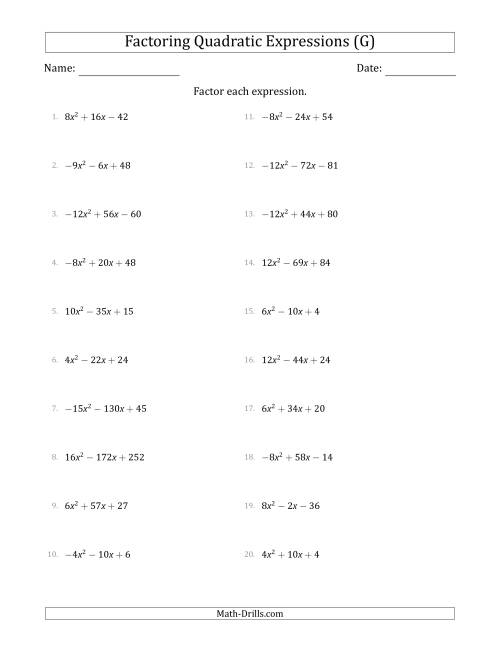

We also returned to factoring polynomials and used the substitution method to factor a 4th degree polynomial. Expressions with fractional or negative exponents can be factored by pulling out a GCF. In this section, we used factoring with special cases and factoring by grouping to factor expressions with negative and fractional exponents. Learning Objectives By the end of this section, you will be able to: Simplify expressions using the properties for exponents Use the definition of a negative exponent Be Prepared Before you get started, take this readiness quiz. In our last example, we show why it is important to factor out a GCF, if there is one, before you begin using the techniques shown in this module. Set each term in the factored form equal to zero to solve for x. Now factor (m-1) from each term:ĭo not forget the original GCF that we factored out! Our final factored form is:Ħm^2k-3mk-3k=3k (m-1)(2m+1) Here are the steps: Factor out the greatest common factor (GCF). Rewrite the middle term with the factors we found: What does it mean if our exponent is negative Can you multiply a number to itself a negative amount of times Instead of trying to wrap our brains around what that would mean, we use the exponent rule of division (quotient rule) to learn what a negative exponent means. Our factors are -2,1 which will allow us to factor by grouping: Likewise, if the exponent goes to minus infinity in the limit then the exponential will go to zero in the limit. To find a, we ask: (?)^2=25y^=-2 that sum to -1 Factors of 2\cdot-1=-2 The main point of this example was to point out that if the exponent of an exponential goes to infinity in the limit then the exponential function will also go to infinity in the limit. The first step in factoring a perfect square trinomial was to identify a and b.

In this section, we will look at a variety of methods that can be used to factor polynomial expressions.Recall that a perfect square trinomial of the form a^2+2ab+b^2 factors as (a+b)^2 Many polynomial expressions can be written in simpler forms by factoring. The middle term has an exponent that's half the first term's exponent. Look for the variable or exponent that is common to each term of the expression and pull out that variable or exponent raised to the lowest power. Look for the variable or exponent that is common to each term of the. Don't let the negative exponents throw you. Factoring Expressions with Fractional or Negative Exponents Expressions with fractional or negative exponents can be factored by pulling out a GCF. Example 2 (Factoring with Negative and Fractional Exponents). VIDEO ANSWER: were gonna try and complete this sentence to simplify an expression that contains negative exponents. Attempt to factor as usual (This is quite tricky for expressions like yours with huge numbers, but it is easier than keeping the a coeffcient in. We can confirm that this is an equivalent expression by multiplying. Expressions with fractional or negative exponents can be factored by pulling out a GCF. Know techniques and formulas for factoring polynomials. My preferred method of factoring expressions such as yours or those in the form ax2+bx+c (with a>1) follows: 1.


 0 kommentar(er)
0 kommentar(er)
